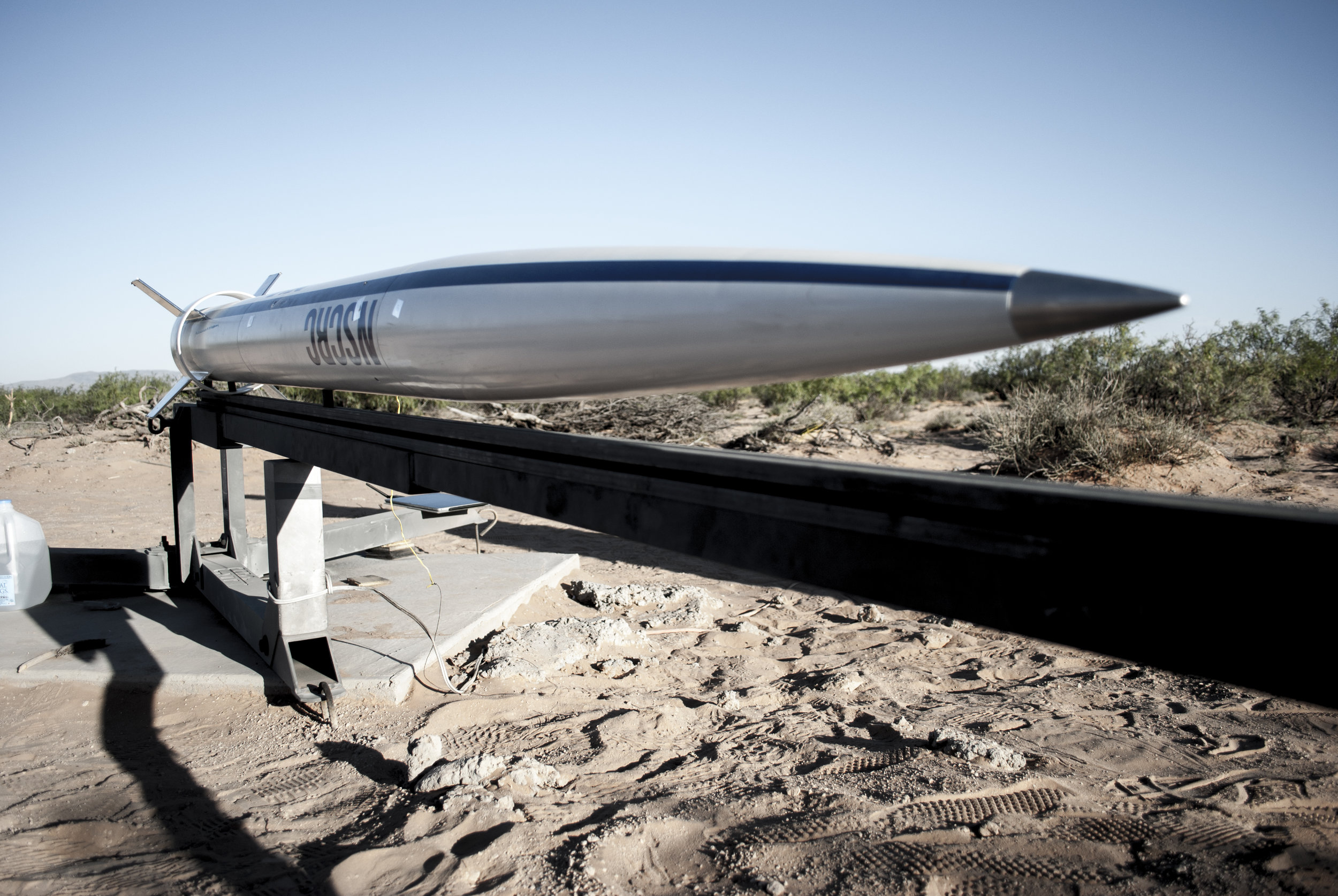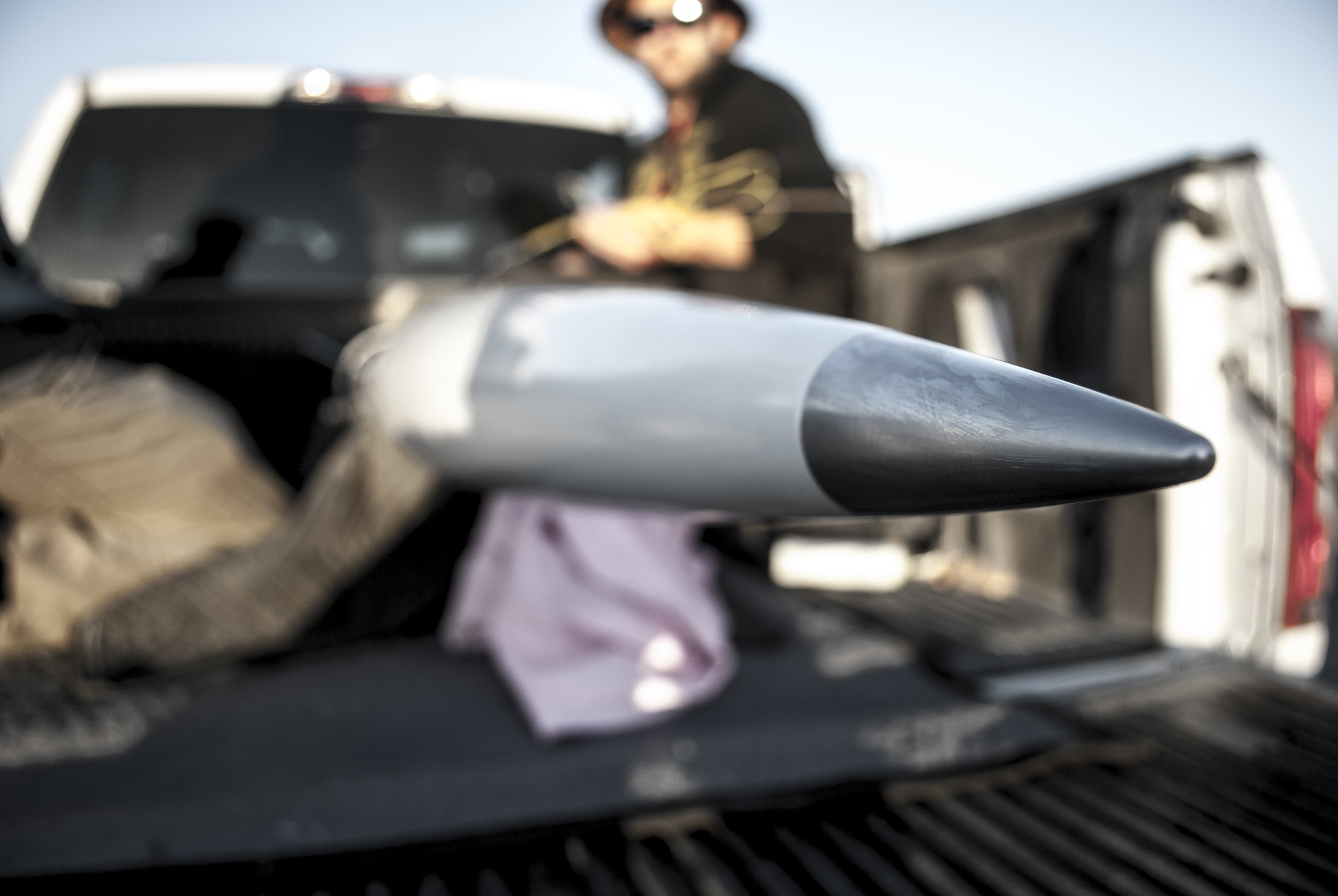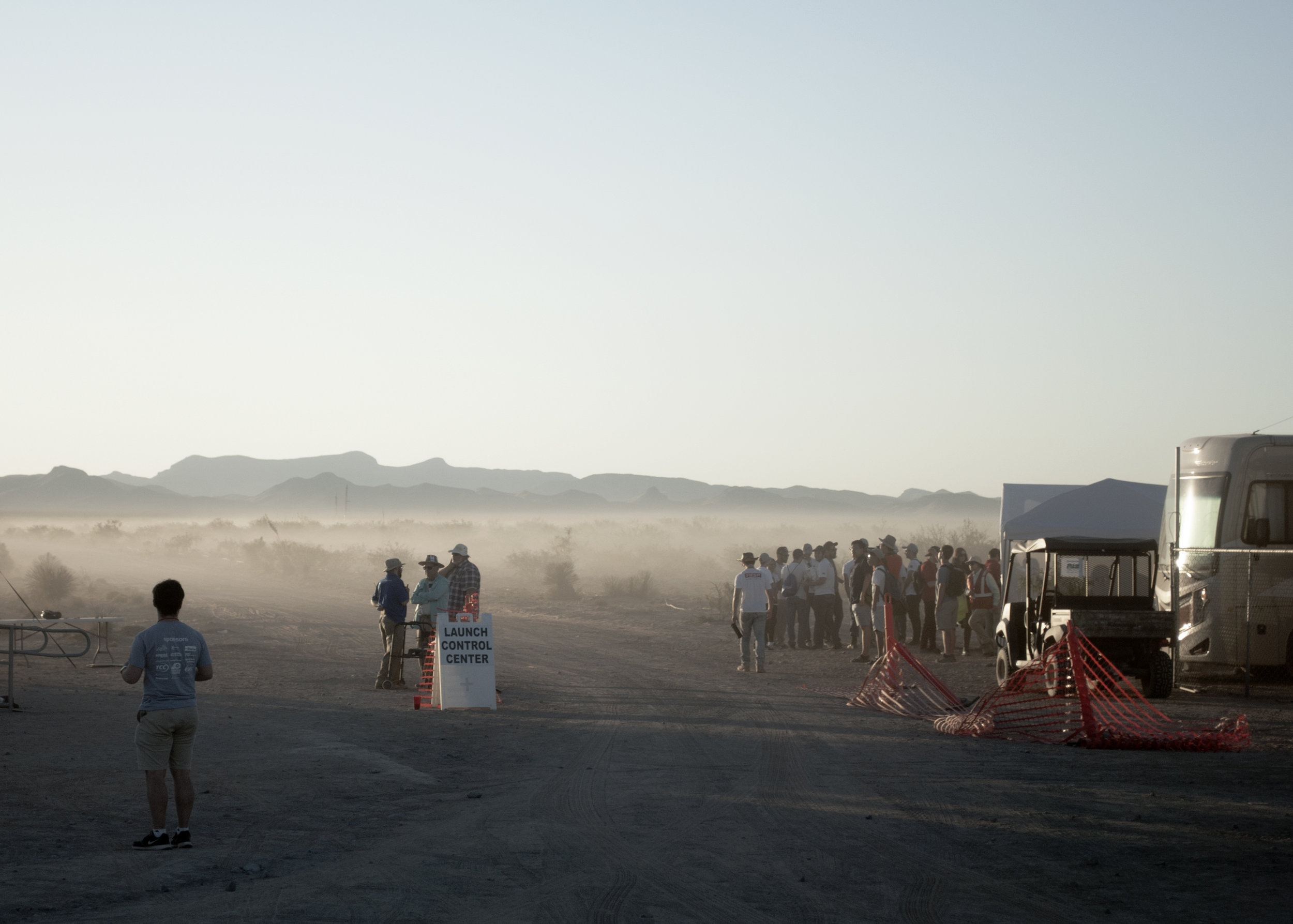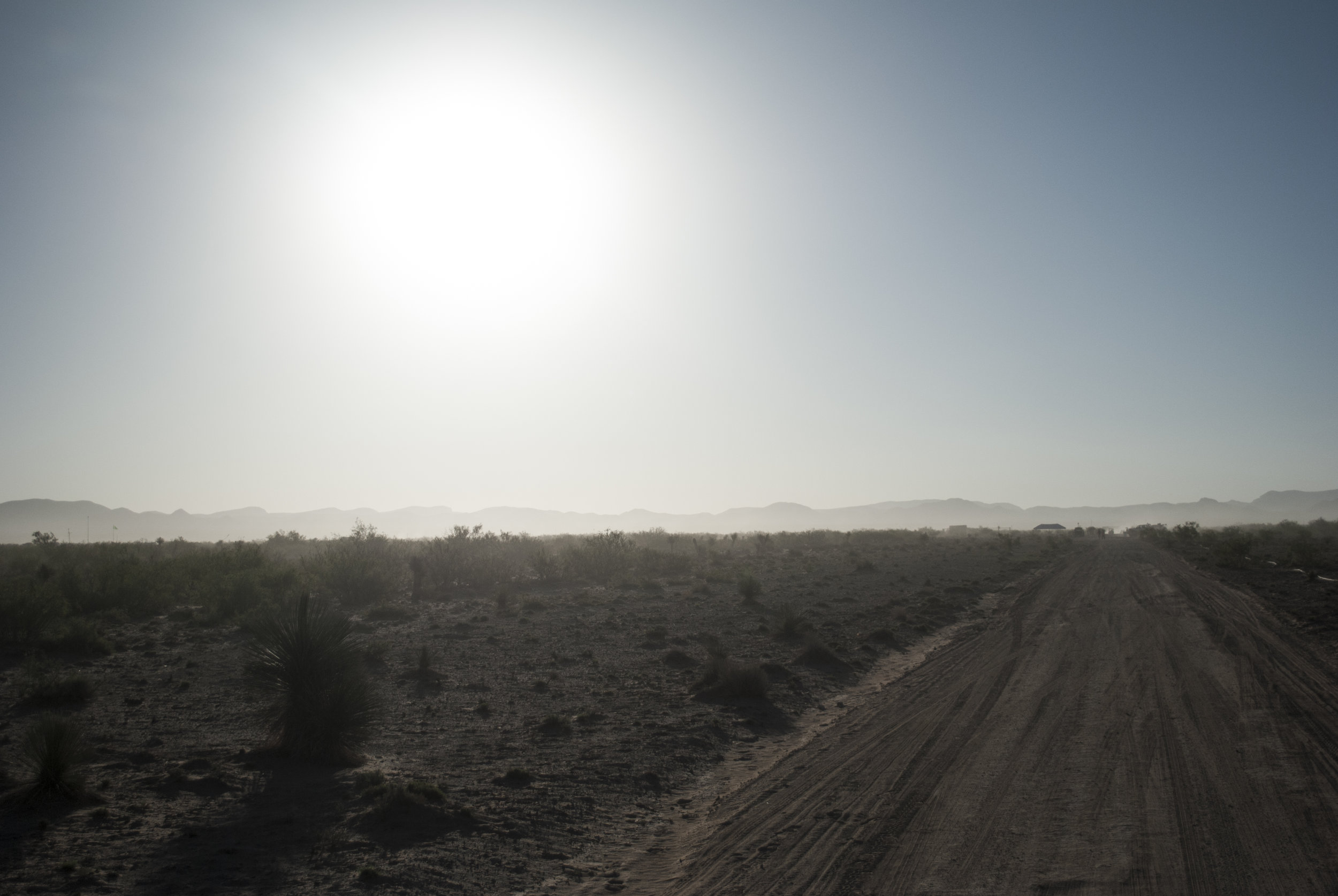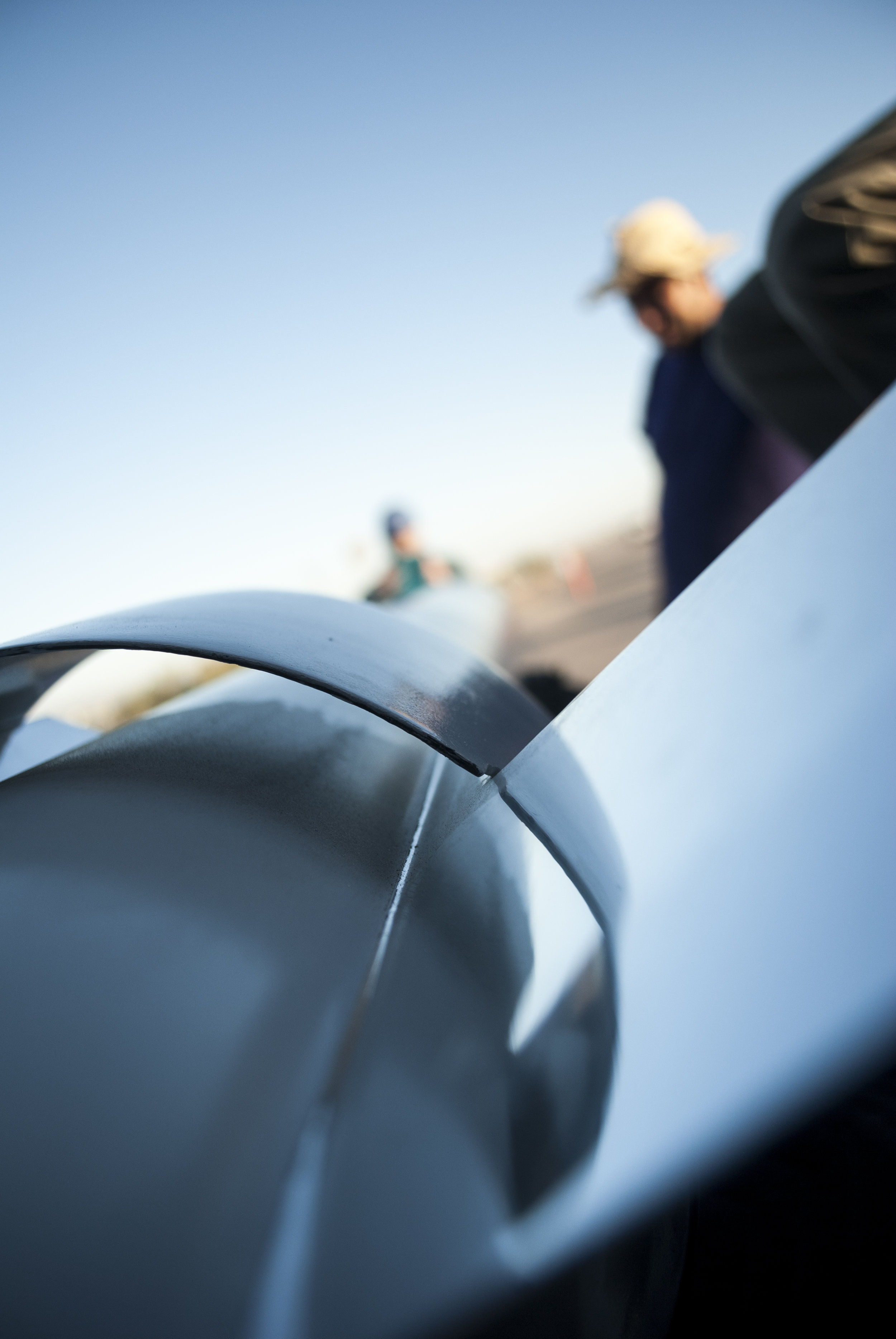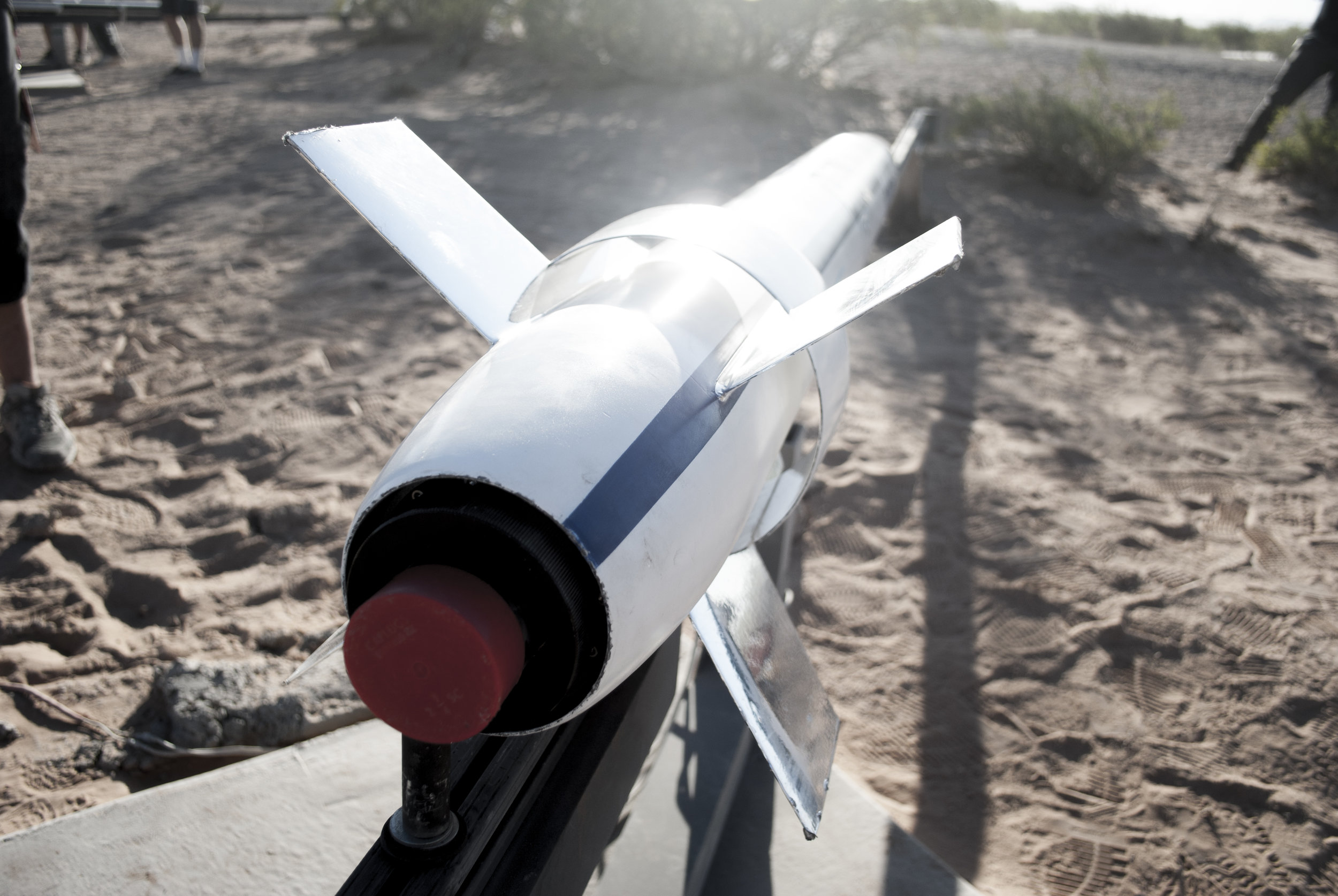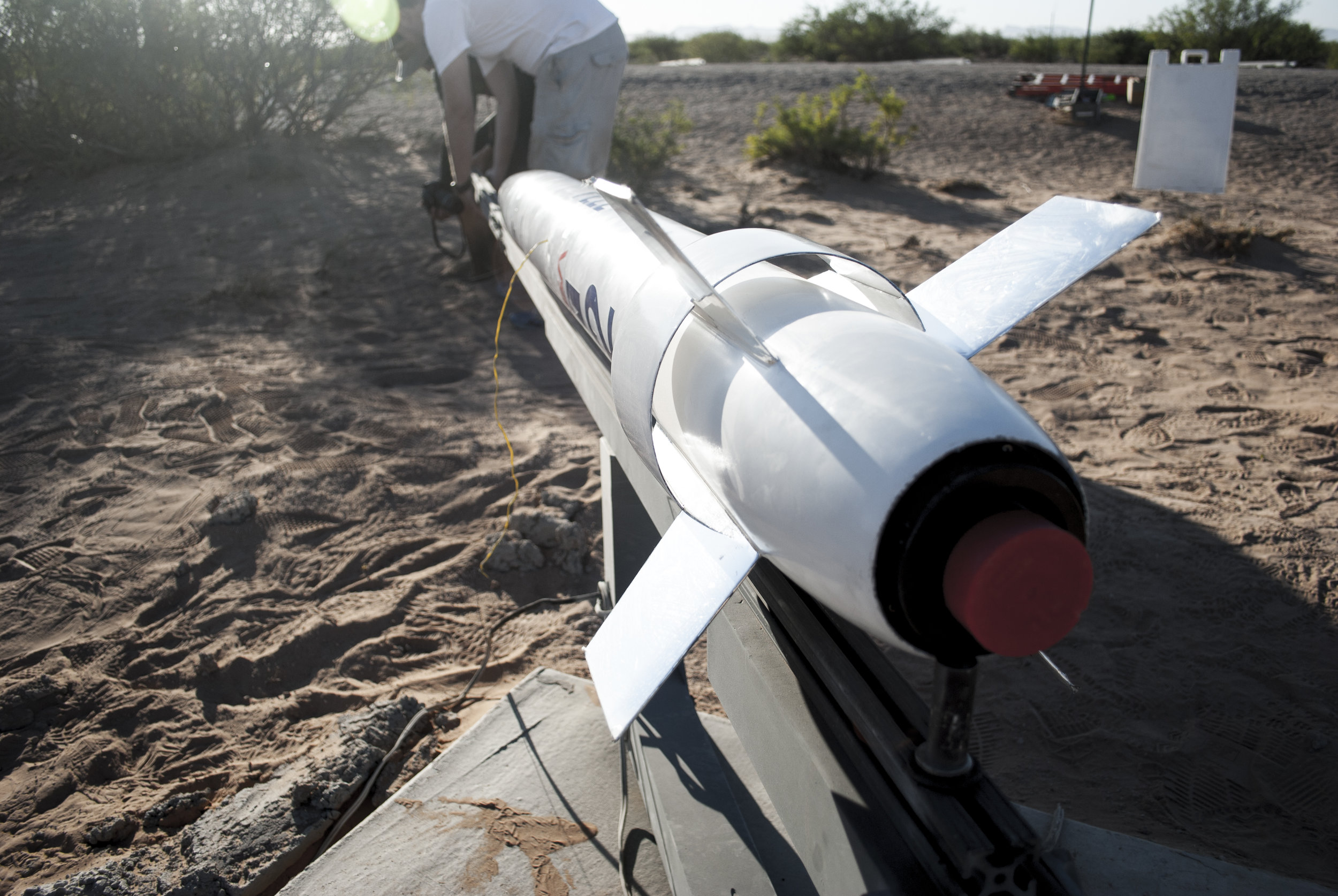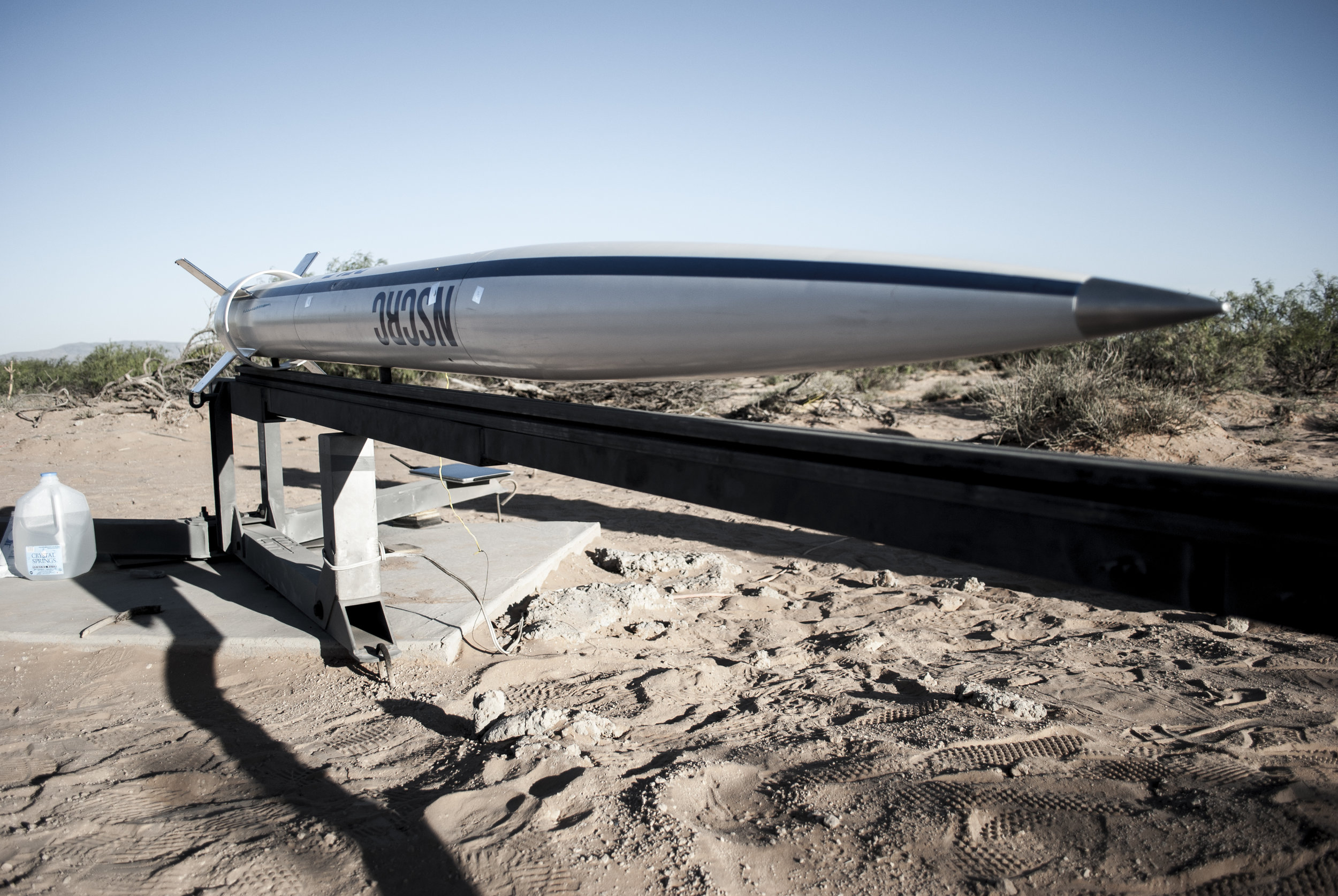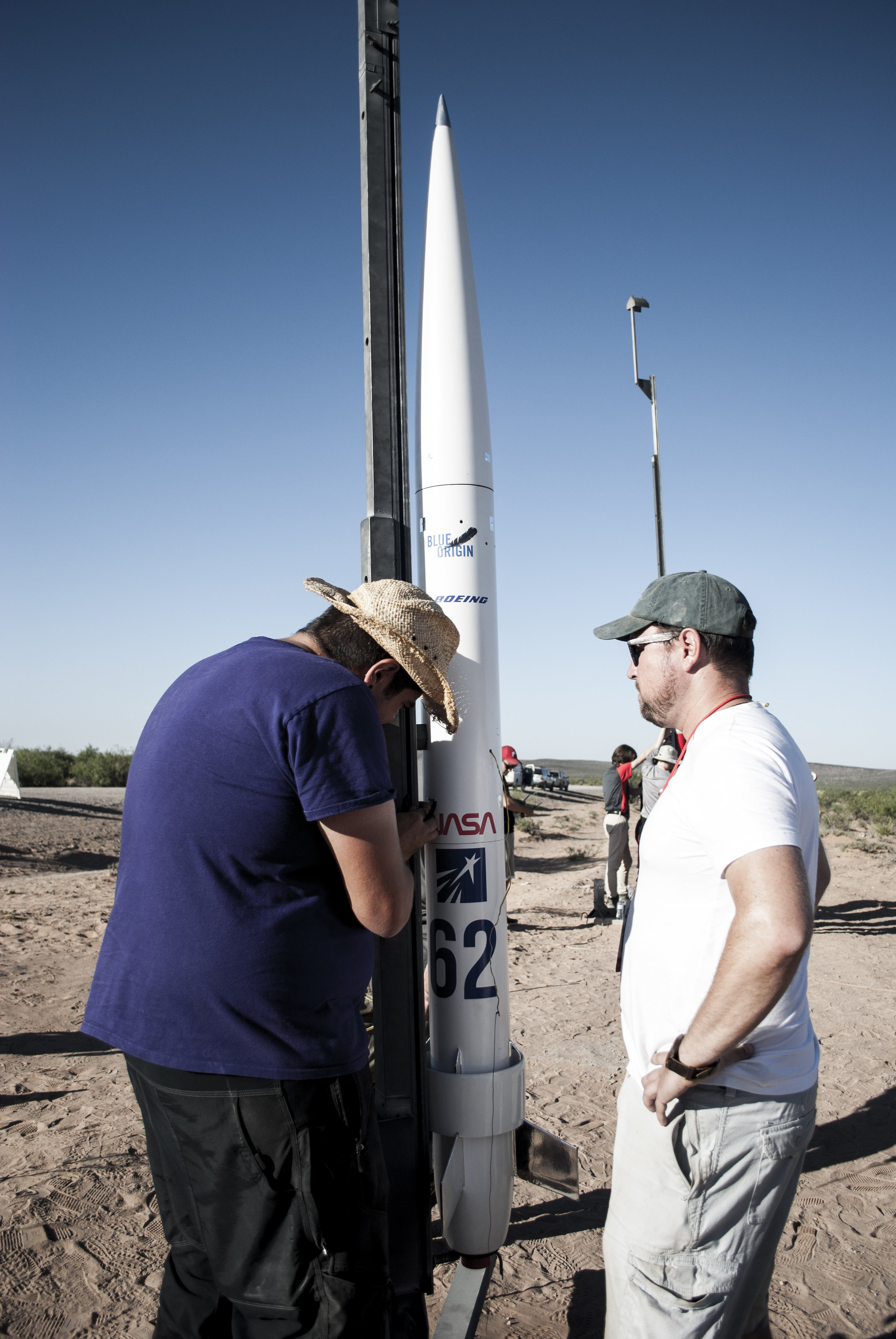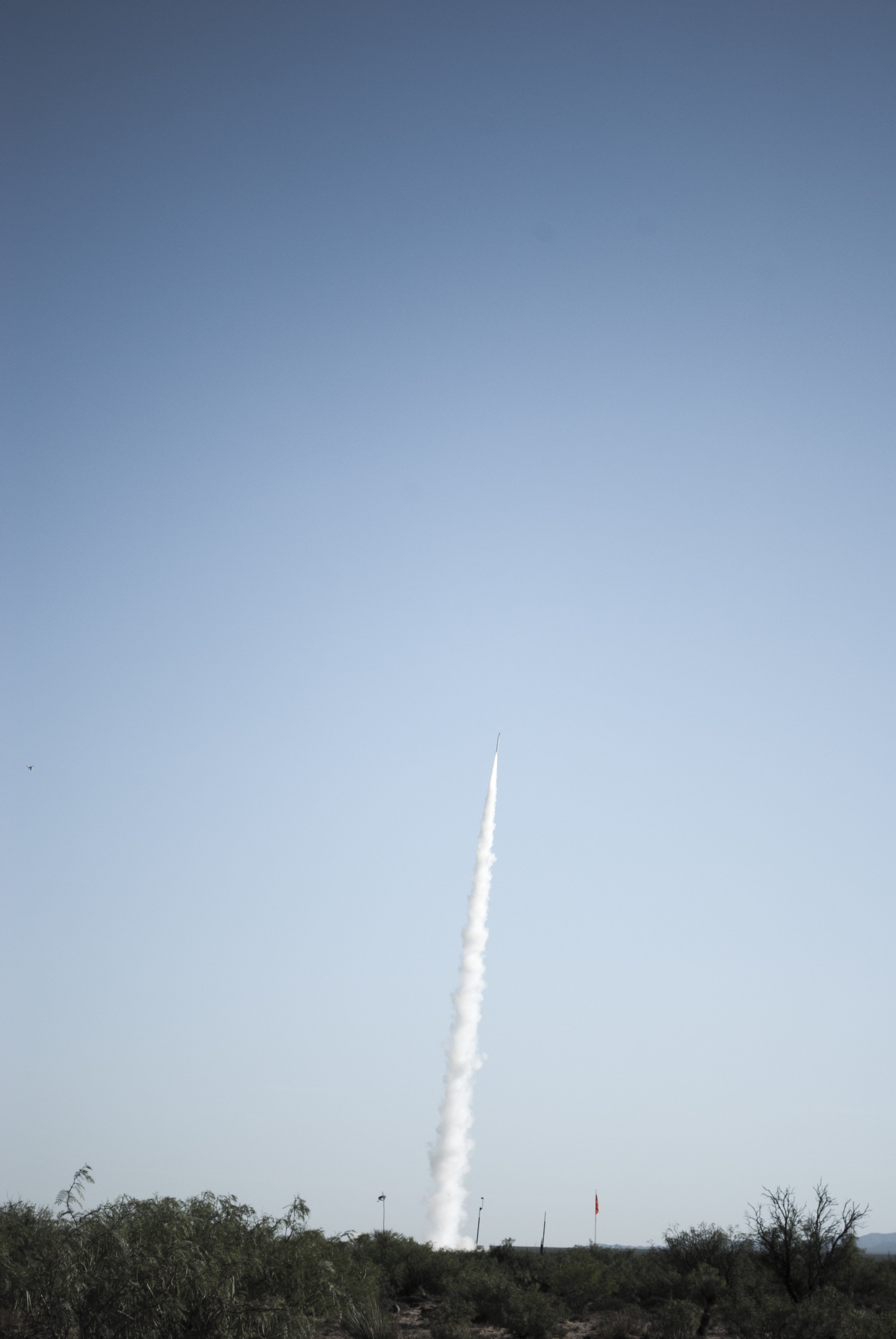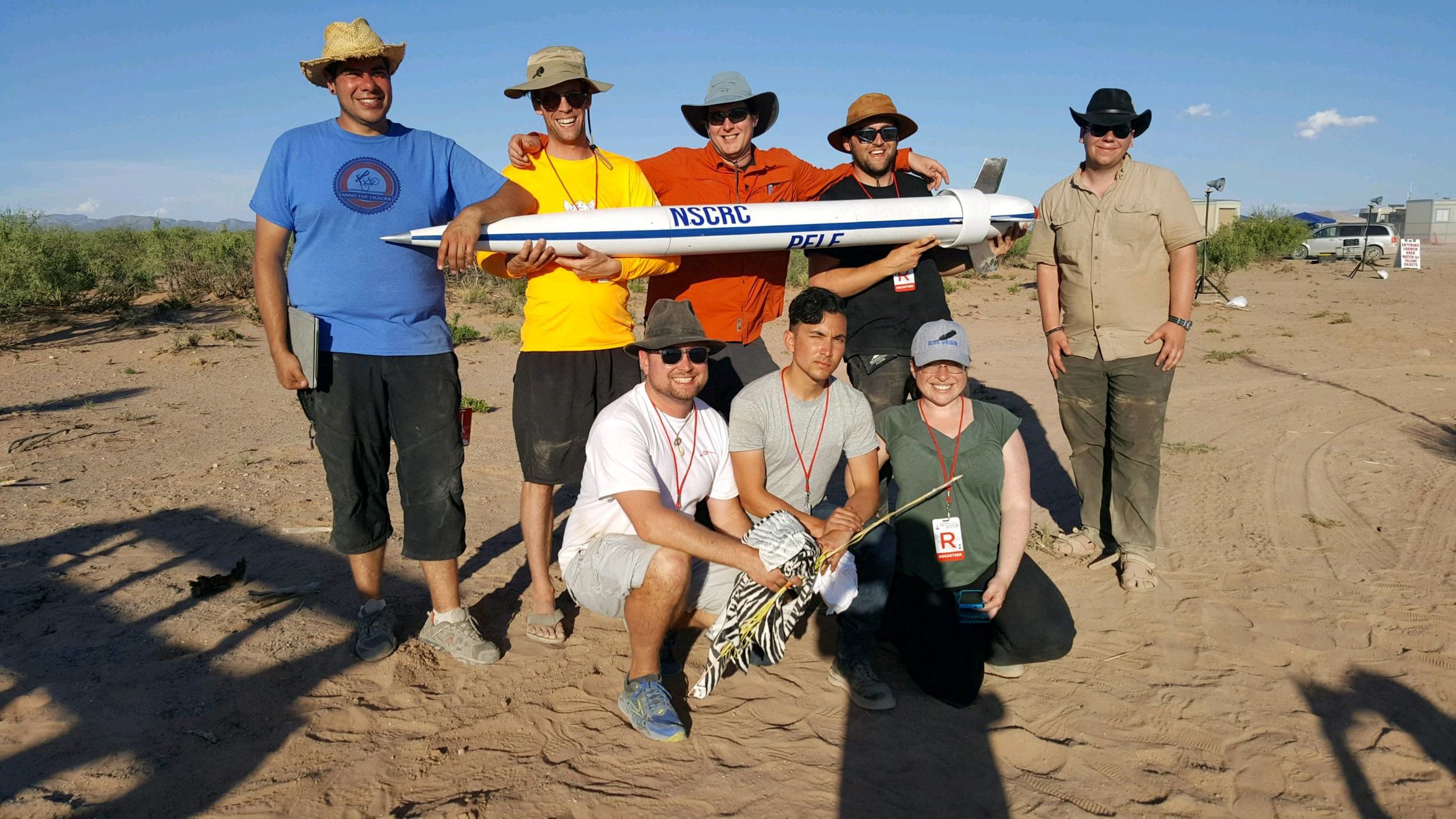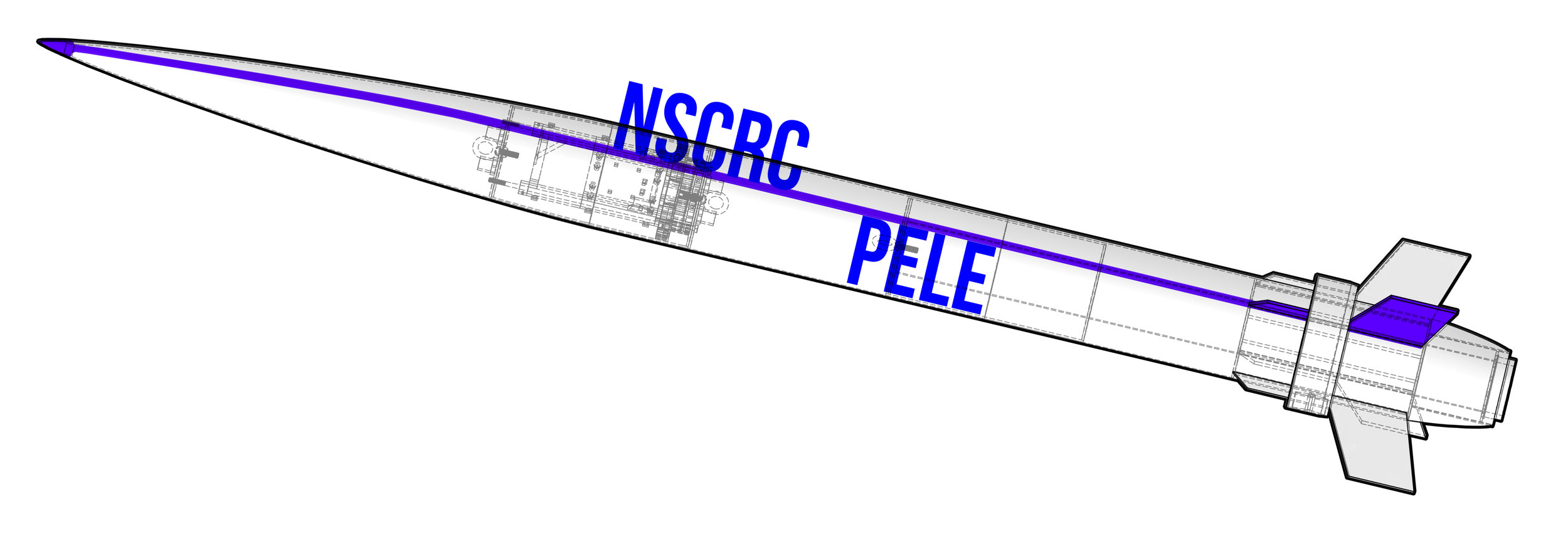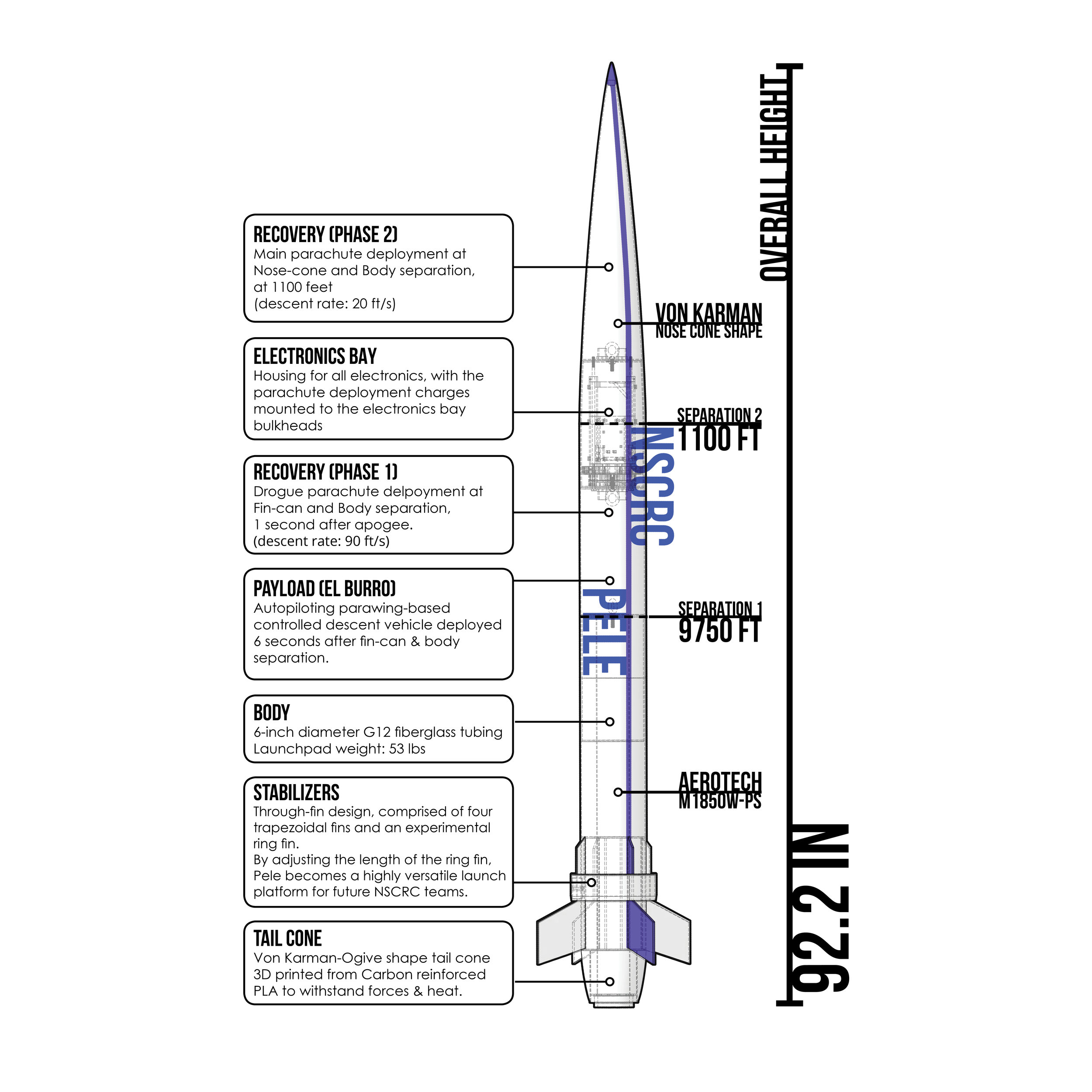ESRA Rocket Competition (NSC // 2018)
Premised on the Experimental Sounding Rocket Association's (ESRA) Intercollegiate Rocket Engineering Competition (IREC) at the Spaceport America Cup, the North Seattle College Rocketry Club (NSCRC) designed and assembled a solid-fuel rocket (Pele) and an autonomous controlled-descent vehicle payload (El Burro). Pele was designed with key special features tuned to accurately and efficiently deliver a 4 kilogram payload to 10,000ft. These special features include the nose cone, tail cone, and ring fin.
NOSE CONE & TAIL CONE
The nose cone is a 5.5:1 Von Karmann–Ogive, constructed of filament-wound fiberglass with an aluminum tip (I.D. 6.00”, O.D. 6.17”, Length: 34”, Weight: 3.76 lbs). The Von Karmann-Ogive shape was chosen for its minimal drag characteristics tuned for the expected velocity during Pele’s flight. The tail cone conversely was 3D printed out of carbon-fiber laced PLA (a type of plastic), which is “heat treated” (baked in an oven) to make it stronger and more heat resistant. Its profile is also based on the Von Kármán-Ogive shape, and its taper helps reduce turbulent airflow immediately behind the rocket. This factor helps accommodate the drag created by the third special feature, the ring fin.
RING FIN & FLEXIBILITY
The ring fin is arguable Pele’s most defining characteristic. By incorporating the ring fin, the size of the fins is reduced along with the aft profile of the rocket (from 34.6 sq.in to 26.6 sq.in). The reduced profile reduces the possible effect of shear wind on Pele during its flight. The location of Pele's Center of Pressure (COP) can be adjusted by increasing and decreasing the size of the ring fin, providing flexibility in Pele's flight characteristics and mission, making it more viable for future use and experimentation by the NSCRC.
PAYLOAD (EL BURRO)
Upon reaching 10,000ft, the rocket's recovery system engages and an initial drogue parachute is deployed to limit the rocket's descent. Six seconds later, El Burro is deployed from the payload bay, initiating its flight protocol. El Burro is an autonomous parawing-based controlled descent vehicle, with the mission to land within 50 meters of a predefined location using a Guidance-Navigation-Control (GNC) system whose hardware and software was designed and assembled by the NSCRC Payload Team. El Burro’s rigid frame holds the dimension of a single CubeSat (10cm x 10cm x 10cm), with an additional 12.7cm x 12.7cm x 11.5cm taken up by the folded parafoil, and weighs approximately 2.3 kilograms. Download El Burro's Post-Flight Report for a full description of its build, it's autopiloting script, and compiled datasheets of each sensor used.
My role in this project included rocket recovery system management, payload guidance/navigation/control system lead (custom hardware & software assembly and oversight). I was elected to second lead later in the process.

